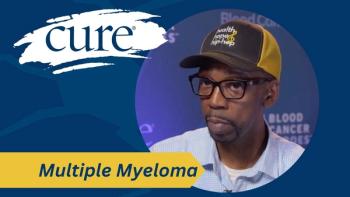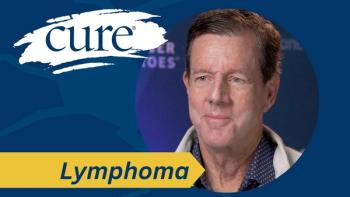
Multigene Panel Testing Could Reveal Breast and Ovarian Cancer Risks
Allison W. Kurian offers insight on using multigene panel testing to discover breast and ovarian cancer risks that may have otherwise went undetected.
Multigene panel sequencing detected ovarian cancer-associated mutations in 11 genes in a large study of nearly 100,000 patients clinically tested for hereditary cancer risk.
Using a panel of 25 genes, 14 percent of the 95,561 women from the database were found to have a genetic mutation. One-third of patients harbored unexpected genes — such as breast cancer genes — which are described as uncommon to appear on standard tests.
A second study, also presented at the meeting, examined the potential harms of multiplex testing for cancer risk, such as unwarranted surgery or adverse psychological effects. However, results showed that, at a three-month follow-up after genetic testing, the rates of patient distress, intrusive thoughts, or regret of testing were found to be low.
Can you give us an overview of your ongoing study on multigene panel testing?
In an interview with CURE, lead study author on both trials Allison W. Kurian, associate professor of Medicine and of Health Research and Policy, Stanford University School of Medicine, discusses these studies utilizing multigene panels to uncover previously undetected risks in patients with breast and ovarian cancer, as well as provides insight on the significance of BRCA testing.This is an interim report of a clinical trial that we've been doing, and that trial is evaluating a multiple-gene panel test. Instead of the older practice of testing for only one or two genes when people come in with a family history of breast cancer or colon cancer, this is a panel that tests 25 genes. This is quite a few more than we usually test.
The goals of this study are to understand the yield when we do this bigger panel and to determine what the proportion of patients are that have harmful mutations, as well as variants of uncertain significance. We also want to very much understand the patient's perspective and the outcomes. Is this information that upsets patients? Does it drive them to do things that we would rather them not do, such as preventive surgery that might be unwarranted based on the results? Do they have high levels of distress? That's been the intention of the study.
This is an interim analysis where we've enrolled 1,000 of the total 2,000 patients. The study enrolled rather quickly—it was 1,000 within the first year at three centers. One of the real strengths of the study that we see is the diversity of the patients, both in terms of ethnicity and sociodemographic background. One-third of the patients had no higher than high school as their level of education; I believe 30 percent to 40 percent were of Hispanic ethnicity and about 29 percent were Spanish-speaking only. It's a nice, diverse population, and one where we think we would have a good chance of really seeing the impact on a real-world population of genetic testing. This is not what we see often in a tertiary referral center, so we like that a lot.
What we found was that about three months after genetic testing, which are the results we recently presented, the rates of distress, of intrusive thoughts or regret of testing were really very low. We were encouraged that there doesn't seem to be an early signal for harm from this kind of testing from a psychological perspective. We also saw a very low use of preventive surgery among patients who had negative or uncertain results, which was encouraging to see, and we saw a good understanding of the results in terms of patients notifying their family members when a result was positive.
Those were the main findings. The caveats are that the follow-up is short at this point; it's only about three-month follow-up. We're going to follow patients much longer, so really this is an early safety signal at this point and needs further follow-up.
Can you also talk about gene panel testing for possible ovarian cancer risks?
This is a study focused on understanding the level of cancer risk with gene mutations, again using one of these large multiple-gene panels. I think the significance here is that more and more patients are being tested with these panels, and much of the time the genes on the panels are associated with risks that are not really well-defined. For example, we might have a patient who had breast cancer and maybe we find a mutation in a gene like CHEK2 or ATM. We think we're beginning to understand the breast cancer risk, but we really don't know the associated ovarian cancer risks, and that's really important because if the risk is high, this woman should be protected by being offered preventive surgery. So it would really change care.
Thus far, there have not been large, well-powered studies of penetrants for associated cancer risk with these mutations in general. What we did was use a large database from a testing laboratory to look at penetrants, or associated risk of ovarian cancer with these gene mutations. We had 95,531 total patients, so it was really a large sample size, and upward of 5,000 ovarian cancer patients. That was a real strength of the study. We were able to use a few different statistical methods to analyze the risk of ovarian cancer, and we used the few different methods as sort of a backup check to make sure our results would be relatively consistent.
What we found was quite interesting. We found about 14 percent of ovarian cancer patients did have a genetic mutation on this panel, and about a third of these mutations were in what I would describe as unexpected genes, or genes that aren't typical for our standard testing. A number of them were genes we typically think of as breast cancer genes, not necessarily ovarian cancer genes. I think it'll be interesting to understand the ovarian cancer risk.
Caveats to this type of study is that it is a sample that is attained from clinical practice, which is not the same thing as a carefully controlled trial, so there are always questions there about data collection methods and those sorts of things. To the best of our ability, we think that these are reasonably valid based on prior work and based on what we see through different analytic methods. At this point I think this is going to be something that needs further study, but it is quite interesting in terms of the ovarian cancer risks that we see.
What is the importance of early BRCA testing?
Early genetic testing these days, BRCA being a good example, is valuable in that it helps to define a person's individual risk of developing cancer. For the better-understood gene mutations like BRCA1 and BRCA2, we have a really clear sense of what the ballpark of risk would be and what interventions could help. For example, if we find a woman has a BRCA1 mutation and she's never had cancer, we would be able to offer her intensive breast screening with mammogram and magnetic resonance imaging, or if she prefers preventive mastectomy. Subsequently we would be able to offer her preventive oophorectomy, which has been shown to be associated with improved survival.
What evidence supports BRCA testing and what do the guidelines say?
There is evidence of all kinds over the last 20 years that has looked at BRCA testing, and it's been more than 20 years now since the genes were discovered in 1994 and 1995. Basically what it's shown is that in various populations, rates of finding mutations range from maybe 5 percent in unselected breast cancer patients up to 20 percent to 25 percent in populations such as women of Ashkenazi Jewish descent with breast cancer or ovarian cancer.
Those are high enough numbers that it makes sense to go looking when certain criteria are met, and certainly we have data that has shown that when we do genetically-targeted interventions like preventive removal of ovaries, there's a survival benefit, and that's the evidence.
In terms of guidelines, we have pretty clear guidelines that are developed primarily by NCCN (National Comprehensive Cancer Network), and really they focus on populations that are thought to have the risk of a BRCA mutation that is over 5 percent to 10 percent. It is a long list of combinations of different relatives, but some that stand out would be any woman with breast cancer under the age of 45, any woman with ovarian cancer at any age, male breast cancer at any age, and some combinations of family history.
What is the prevalence of BRCA mutations in patients with ovarian cancer?
Studies differ, but it's thought to be in the range of maybe 10 percent up to 15 percent.
What is the difference between germline versus somatic BRCA alterations, and is one more important than the other?
Germline means that it's something the patient inherited, so it's a mutation that has been part of the patient since conception. The patient got it from the egg or sperm cell and then it was propagated to every cell in his or her body. You can do a blood test and find it. When there's a germline mutation in BRCA1, BRCA2 or another similar gene, it confers a high risk of developing cancer. It doesn't mean it's a certainty, but it's a high risk. That's what that part is.
Somatic means acquired over the lifetime of the patient, so if you do a blood test you won't find it because the patient wasn’t born with it. If you look at the tumor, and of course tumors acquire lots of genetic mutations, you will find a change of some sort like a mutation or modification.
The question for treatment is whether a cancer that has acquired a mutation somatically behaves like a germline one in terms of a response to therapy. That is a question that's hotly under study; there's some evidence that they all behave the same way and there's some evidence that there are differences.




